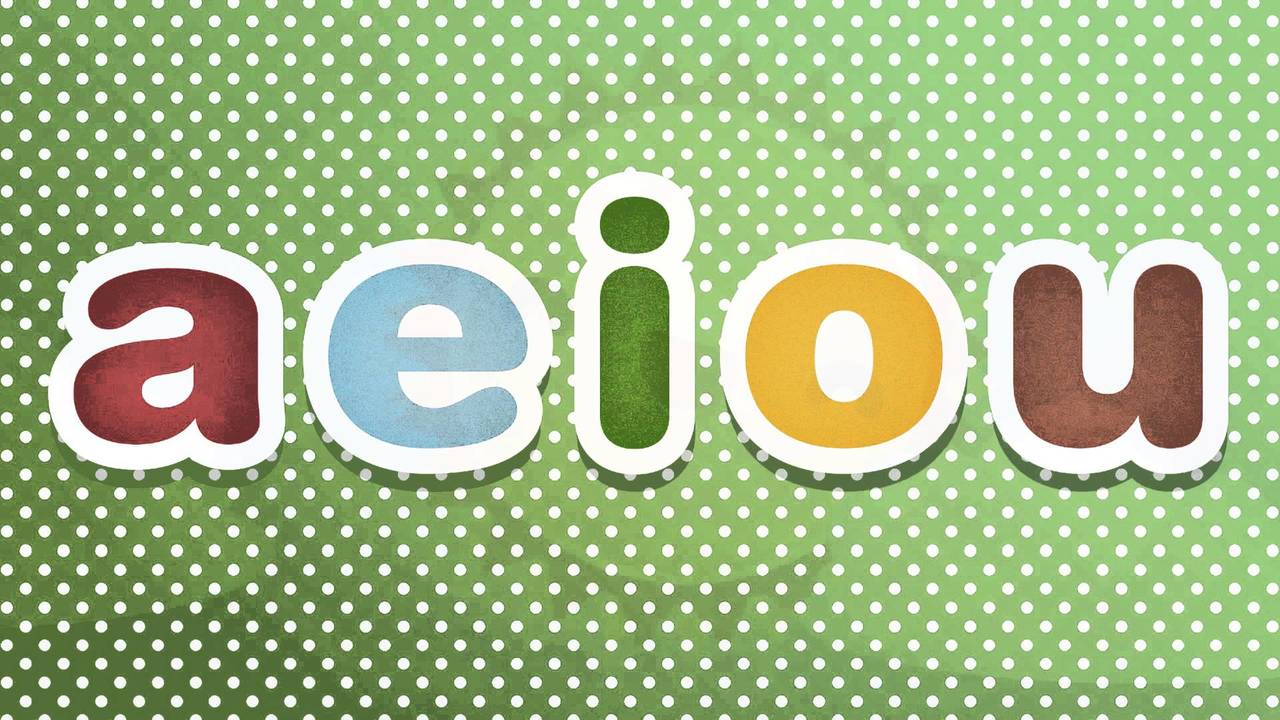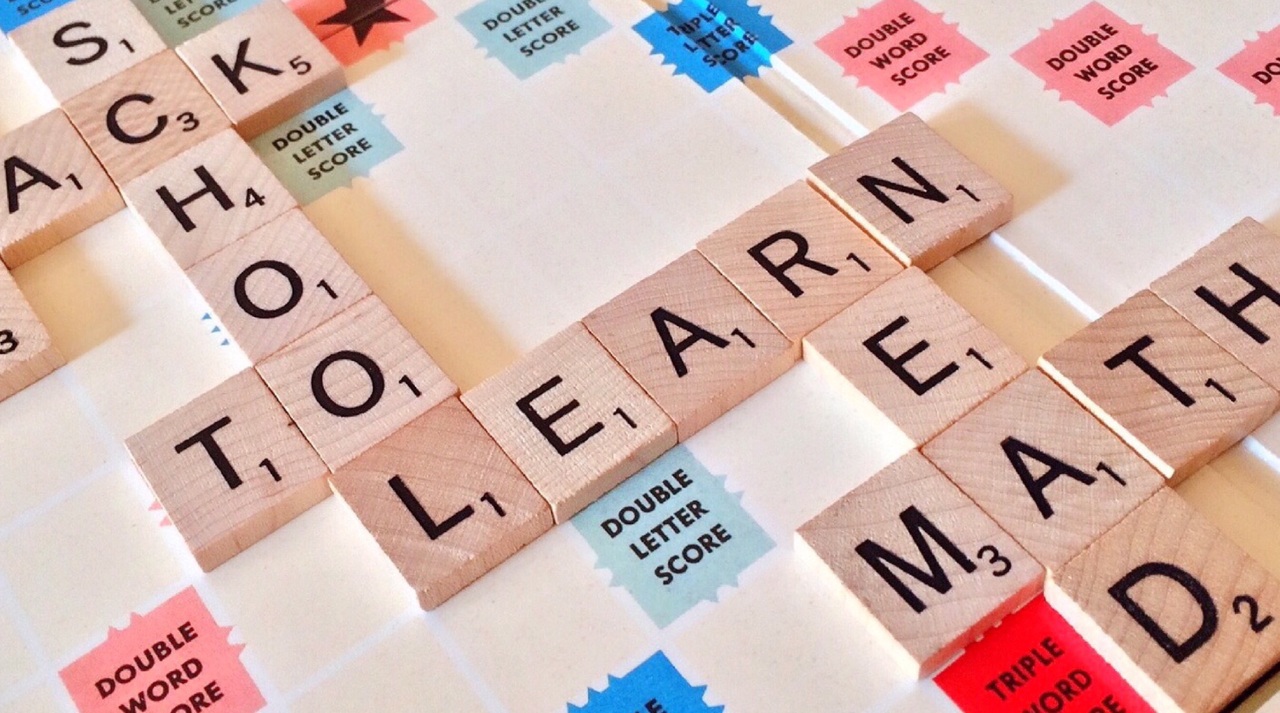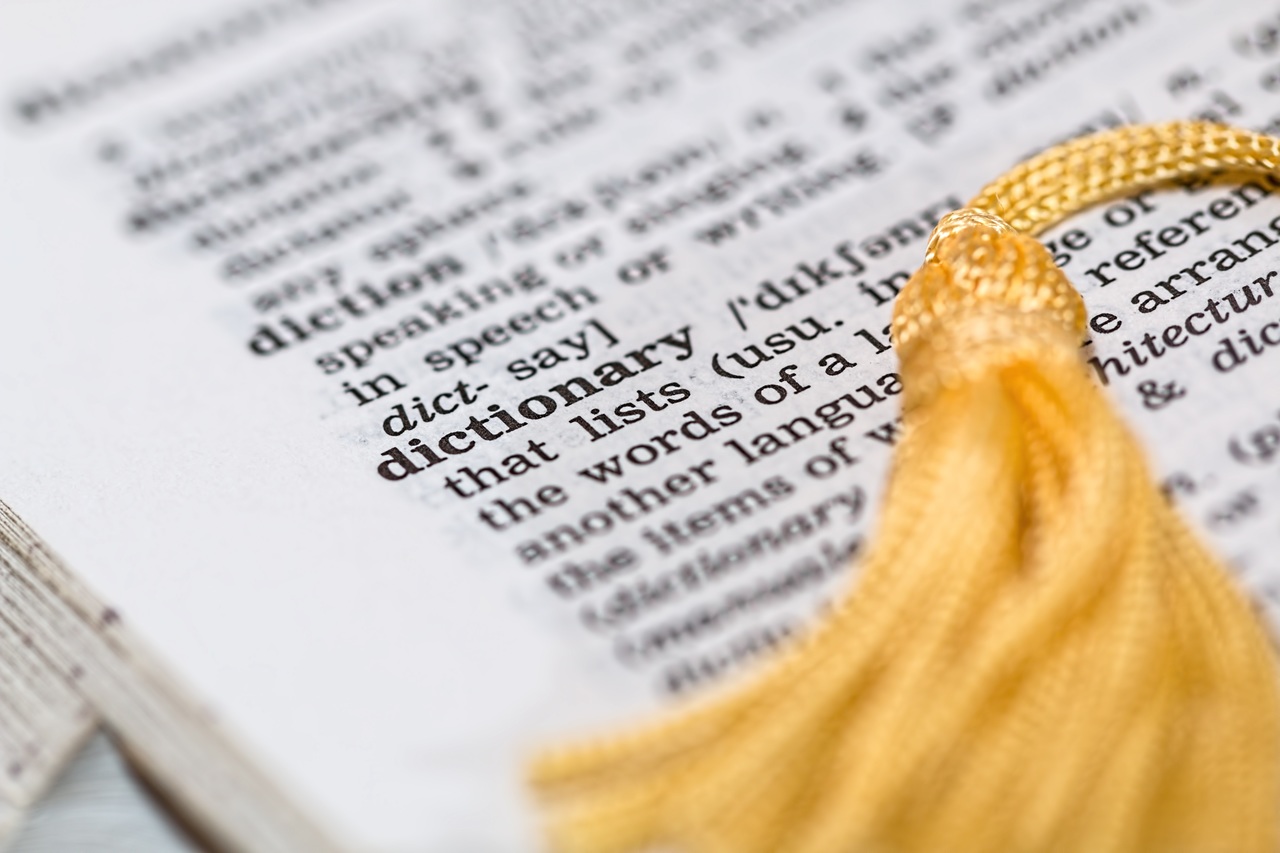How to Speak English: The Ultimate Guide to English Pronunciation

As an English language teacher, I often find myself amid this conundrum where I have to figure out the most effective lesson plan to make a particular topic at hand as simple as possible for my students to comprehend. Depending on the grade and skill level of students, this more than often becomes quite a challenge, especially when dealing with topics that revolve around speaking skills.
However, practice truly does make perfect – as much of it as it takes. On the other hand, as hard as it is for me to admit, English (in my opinion) simply does not fall in that same learning curve category as some other languages I know, such as French, Spanish, and even German, which is fairly similar to English in nature.
The way I see it... learning the English language is the equivalent of a sea journey. You will definitely hit your final destination in due time, but the journey may not always be as enjoyable. Some challenges that you might not expect may hinder the process of acquiring the English language, making it not as easy as one would think.
Learning English requires finessing through all the wrinkles on your journey and hitting your goal as a champion, and not just another passenger. It is what separates an A1 from a C2. In other words:
A smooth sea never made a skilled sailor.
Rightfully so.
What This Guide Is About
This guide is your map to a smooth journey through English pronunciation, intonation, rhythm, and language practice.
In the perfect case scenario, this blog post will be your oasis of pertinent information that will help you learn how to speak English.
By giving you a heads-up on any hurdles you might face in your future conversations, you will set sail to talking your way into mastering the fine art of English speaking.
What This Guide Is Not About
This guide is not a wild treasure map that will provide you with the answers to all the questions you've ever had about the English language.
On top of that, we will not be using any overly complicated linguistic jargon that will only take us further away from our path.
The ultimate focus here is not on understanding grammar and building vocabulary, but learning how to speak English properly and making your experience on that journey as smooth as possible.
All aboard!

The English Alphabet
To kick things off, we have to cover the basics first. If you can remember your first ever English lesson at school, you were probably getting familiar with the alphabet and learning letters one by one. That's simply the way it goes, in general. Knowing the alphabet is the backbone to knowing how to speak a language.
So, how many letters are there in the English alphabet?
The answer is 26 and it looks likes this:
a, b, c, d, e, f, g, h, i,
j, k, l, m, n, o, p, q, r,
s, t, u, v, w, x, y, z
Even though the official letter count in the English alphabet is 26, the letters altogether can make up more than 40 distinct sounds, which we call phonemes.
Consequently, there are a lot more sounds than letters in the English alphabet, with many letters having more than one pronunciation. This makes English quite a lot more different that other languages. It is not a phonetic language, hence there are many letters that have two or more sounds and even some that are completely silent during pronunciation.
To put things in perspective, let us look at the letter c in the words "clean" and "ceiling". The c in "clean" sounds different than in "ceiling", and vice versa. Moreover, combined with other letters, such as "ch" in the word "chalk", we see that the number of sounds (or phonemes) corresponding to one letter in the English alphabet is even higher.
Fun Facts About the English Alphabet
Fun Fact #1: The most common letter in English is e.
Fun Fact #2: The least common letter in English is z.
Fun Fact #3: All letters in the English alphabet contain just 1 syllable, except for w. When pronounced, w is the only letter in the English alphabet which contains 3 syllables, and it is pronounced as /ˈdə-bəl-yü/.
We will be delving deeper into a detailed analysis of all 26 letters and their phonemes in another section of this guide. For now, let's start with learning how to say the English vowels.

How to Pronounce English Vowels
In order for us to get a full grasp of the English vowels, we have to know what a vowel is first. A vowel is a speech sound made by the vocal cords, which comes from the lungs and is not blocked. Hence, there is no friction in the sound during the pronunciation of a vowel.
Like most languages around the world, English has 5 vowels:
a, e, i, o, u
However, the letter y is considered a vowel in some cases, as well, due to the nature of its pronunciation, e.g. "fly" vs. "ready". This is why there has generally been a lot of discussion and confusion as to whether or not y should be considered a vowel when it is, in fact, a consonant and whether the official number of vowels in the English language is 5 or 6.
Fun Fact #1: The 5 or 6 English vowels make up more than 20 phonemes.
Fun Fact #2: All English words have vowels. There is not a single word in the English language that does not contain at least one vowel except for some professional titles, acronyms, and/or interjections, such as "Dr.", "PhD", "TV", or "shhh". Nonetheless, it is quite odd to consider the given examples as real words.
Generally speaking, modern education has always preferred the number 5 to be taught to students from a young age as the official number of vowels in English.
However, what is even more astounding is the fact that phonetics, on the other hand, teaches us something totally different. According to the International Phonetical Alphabet, the exact number of vowels and vowel sounds in English exceeds far beyond the numbers 5 and 6.
Amazing, right?
To make matters more interesting, we are first going to divert our attention to some special vowel cases that occur in English before analyzing the 5 or 6 main English vowels in-depth.
Let's get the ball rolling.
Special Vowel Case #1: æ
There is one particular vowel sound in English that learners struggle with (I'd say) the most. It is the /æ/ sound – one of the many unique features of the English language in today's basket.
It is the sound between a and e. It is a near-front sound and falls halfway in between a central and near-open pronunciation. I guess you can call it the middle vowel.
Speakers of other languages often fail the most at pronouncing this particular sound, mostly pronouncing it as the vowel e, which we'll get into in a moment.
The pronunciation of this middle vowel sound requires caution, as you may otherwise end up saying a word you did not intend to say, even though it is just one sound that creates that difference.
Consider the following examples:
ten vs. tan, pet vs. pat, bet vs. bat, pest vs. past
Example #1:
"He lost a bet to me in the past."
Example #2:
"You deserve a pat on the back."
When pronouncing the words "bet" and "past" in the first sentence, we have to be extremely careful not to pronounce the words "bat" and "pest" for failing to articulate the vowel sound /æ/ and uttering /ɛ/ instead. This can not only completely change the overall meaning of the words you are saying but put you in an uncomfortable situation, such as in the case of the second example. Nobody deserves a "pet" on the back.
Special Vowel Case #2: The Diphthong
As we delve deeper into analyzing the English vowels pronunciation and some special cases, we notice some inbetweeners, such as the diphthong (di=two, phthong=vowel sound). It is what occurs when there are two vowel sounds pronounced from a single syllable, even though we perceive them as a single vowel sound.
Example
"I ate eight burgers last night."
To understand what a diphthong is, consider the words, "nose" and "dice" while focusing on the vowels o and i in their rightful locations. Now, pronounce these two words at a normal speaking voice and speed. You can't notice anything out of the ordinary in terms of other vowel sounds present, right?
Now, let's try something different. If you pronounce the two words rather slowly, you can literally feel how your mouth moves from the first part of the diphthong to the second. Moreover, we can notice that the vowels o in "nose" and i in "dice" are not pronounced as single vowels. There are two vowel sounds bound together into one letter.
This is, essentially, what a diphthong is – a double vowel sound in a single vowel letter.
Special Vowel Case #3: Schwa /ə/
As much fun as the occurrence of the diphthong brings into the story of English vowel pronunciation, there is another special characteristic of the English language that few manage to put in an appropriate category. It is the mid-central vowel sound that is known as schwa.
Example
"You should all focus on this."
To get an idea of its sound, schwa is the 'uh' sound typically found in an unstressed syllable of a word, e.g. the first a in "amazing" or "analogy". Its phonetic symbol looks like this /ə/ (sort of like the letter e upside down). Beucase English is a stress-timed language as opposed to some other language that are syllable-timed, such as Spanish, schwa is actually one of the most prevalent sounds in English speech.
In fact, schwa is the most frequently used vowel sound in the entire English language.
How do you pronounce /ə/? It is actually the easiest sound in all of English to pronounce; or any language, for that matter. It does not require much to be pronounced. All you have to do is start up the vocal cords. "Uh" – that's probably the sound you're going to produce. Whereas other sounds require tongue, lip, and jaw movements to be pronounced correctly, the schwa is just effortless. It is a neutral vowel.
What is more, a schwa can be found as the vowel sound for all 5 of the main English vowel letters: a, e, i, o, u, as well as the "sixth" y. Hence, it is not represented in regular writing and we can only find its location by analyzing the stress and syllable structure of a word. Visually, it can only be represented through the phonetic alphabet by its respective phonetic symbol /ə/ or recognized as a part of speech during pronunciation.
However, there is this two-way tendency in the English language to delete and add schwa where it is not needed or required.
When saying something in awe or admiration, English speakers tend to "inject" an extra schwa into a word, e.g.
"This is crazy!" pronounced as "This is c-razy!"
All of a sudden, there is a schwa at the end of the first syllable of the word "crazy".
Moreover, deleting the schwa where it is not needed is what is known as the schwa syncope. To put things in perspective, consider the following words without the "middle" letter a being pronounced as a schwa:
caramel (car-mel), different (dif-rent), camera (cam-ra)
We can notice how the syllable where the schwa is omitted in pronunciation sort of melts into the next syllable. There is no rule in the English language to determine when this should be done. On the contrary, this shouldn't be done. However, it's just something that English speakers do naturally while speaking.
Now that the conundrum of how many vowels there are in the English language is a tad bit clearer and more extensive, let us focus on the unique features of each of the main 5 vowels separately and learning how to properly pronounce them.
Note: Most vowel sounds have longer and shorter pronunciations. What this means is that the length of the sound in terms of seconds differs from word to word, such as the long a in "are" compared to a very short a in "what".
Okay. Let us start.
a - A Four-Way Street
what /ɑ/, are /ɑ:/, about /ə/, April /eɪ/
Example #1:
Example #2:
Example #3:
Example #54
"My favorite time of the year is April."
The pronunciation of the letter a can go multiple ways, depending on the word. One thing to keep in mind is that it has a short, long, a schwa, and a diphthong version. Pretty cool for just one letter.
There isn't exactly a rule or a set of words that determine when and how a should be pronounced a certain way. I think I've said this before but... learning a new word doesn't only imply knowing its meaning, but mastering its spelling, pronunciation, as well as usage in context. The vowel a is the perfect example of that.
e - The Most Spoken, Yet the Most Silent
hello /ɛ/, he /i/, enemy /ə/, resumé /eɪ/
Example #1:
Example #2:
Example #3:
"My enemy's enemy is my friend."
Example #4:
Just like the vowel a, e also has a short, long, a schwa, as well as a diphthong version. Even though there isn't any particular rule that governs when and how e is pronounced in different cases, we can make a point about the diphthong version. It mostly occurs in words borrowed from French that contain the iteration é, such as in "resumé" or "fiancé".
On another note, there is what one particular rule that could be made in regards to e. When the letter e is at the end of a word, it is almost always silent, such as in the words "take", "five", "compose", "orange", etc.
However, when a word ends in a double e, the e not silent, such as in the words "agree", "fee" or "employee"..
Come to think of it, this is only true when there are other vowels in a word. So, there are some exceptions. These are words where e is the last and the only vowel in the word, such as in "he", "she", "we", etc. Consequently, another rule can be made here. Whenever the letter e is at the end of a word and it is, in fact, the only vowel in the word, it is pronounced as an /i/.
i - The Only Vowel With a Dot
tennis /ɪ/, sister /i/, animal /ə/, mine /aɪ/
Example #1:
"My favorite sport is tennis."
Example #2:
Example #3:
Example #4:
Just like in the case of a and e, there are several ways to pronounce the vowel i. It also has a short, long, a schwa, and a diphthong version. Again, the English language keeps amazing us with the lack of systematic rules when it comes to pronunciation, even though each letter can be pronounced in many different ways.
Note: Pronounced at face value as /aɪ/, the stand-alone vowel diphthong can indicate two words: "eye" and the pronoun "I". They all share the same pronunciation.
o - The Rounded One in the Vowel Bunch
October /ɑ/, only /əʊ/, opposite /ə/, cook /ʊ/, snooze /u/
Example #1:
"My favorite time of the year is October."
Example #2:
Example #3:
"In Britain, they drive on opposite sides of the road."
Example #4:
Example #5:
"You should never snooze your alarm."
Apart from the short, long, schwa, and diphthong sounds, the vowel o features a unique characteristic in its so-called "double" form, such as in the words "book", "noodle", "too", etc. As we can notice, the double o is sometimes pronounced as the long /u/ and at times as the short /ʊ/.
Furthermore, the correct pronunciation of a double o gets trickier when found in one-syllable words, such as "poor" and "moor". Even though the pronunciation rule for these words is sort of clear (it should be a long /u/ sound), English speakers naturally tend to pronounce these two words as "pour" and "more" to the point where it gets impossible to guess which one it is, unless we see the spelling or have clear context.
Nonetheless, keep in mind that the double o in "poor" and "moor" leans a bit towards the /u/ sound while "pour" and "more" have a slightly more rounded /o:/ sound.
u - The One-Lettered 'You'
summer /ʌ/, Tuesday /u/, put /ʊ/, focus /ə/, use /ju/
Example #1:
Example #2:
Example #3:
Example #4:
"Just focus on the white board!"
Example #5:
"Don't worry. You can use mine."
The vowel u in all its glory has probably the most pronunciation versions of all English vowels, but there is absolutely no language rule that dictates which version it takes on from word to word.
Worth noting is the vowel's shared feature with the vowel i. Just like it, when pronounced at face value as /ju/, u can indicate the word "you", as the pronunciation of the word is exactly the same.
y - A Consonant, Yet... A Vowel
sunny /i/, vinyl /ə/, fly /aɪ/
Example #1:
Example #2:
Example #3:
Being the "outsider" on the list for its consonant-like features, y is the only vowel that does not have a long sound version, among others. Moreover, it is more likely to be pronounced as a vowel sound in almost any word it is found in.
The only time y is considered a consonant sound is when it is found at the beginning of a word. We'll cover that in the upcoming section about consonants.
What you need to jot down is that there is not a single word in English that begins with y as a vowel sound.
Having covered the gist of the main English vowels, let us have a look at some special vowel cases to make the issue of the number of vowel sounds in English a bit clearer, one step at a time.

Pronouncing Multiple Vowels
Unlike languages such as Spanish, where vowels are pronounced independently and at face value, regardless of their surrounding vowels, the combination(s) of vowels in English can sometimes completely change the individual pronunciation of vowels.
Simply put, there is no easy way around this.
Different combinations of English vowels have different pronunciation, without a single rule in place to generalize the issue or create even a single rule.
The following is a very general list of words that fall under the same "vowel combination" category in terms of pronunciation.
Note: In English, the same pair or combination of vowels can be pronounced in more than one way, depending on the word.
Example #1: /aʊ/ (pronounced as "ow")
town, round, bough
Example #2: /əʊ/ (pronounced as "oh")
though, no, show
Example #3: /ɔɪ/ (pronounced as "oy")
toy, moist, joy
Example #4: /aɪ/ (pronounced as "eye")
height, my, buy
Example #5: /eɪ/ (pronounced as "aye")
weight, fade, maid, gauge
Example #6: /ju/ (pronounced as "you")
beauty, union, feud, lieu
Example #7: /ɔ:/ (pronounced as "awe")
pause, faucet, awe
Because there are so many different ways vowel combinations can be pronounced in, English learners often find themselves in committing the same pronunciation mistakes over and over again - a habit that can (somewhat) easily be broken if you know in what cases these mistakes occur.
Let us have a look at some of those.
Common English Vowel Mistake #1: Verbs vs. Nouns
bow (verb) vs. bow (noun)
English learners have to be careful with pronouncing these two homographs. The verb "bow" (e.g. "take a bow") ends with an "ow" sound while the noun "bow" (e.g. "bow and arrow") has an "oh" sound.
It is crucial to know the difference because you may end up uttering a different word type which does not necessarily fit the context and others will fail to understand you.
Common English Vowel Mistake #2: Beauty vs. Water
eau
To add to the list, there is an odd combination of the vowels a, e, and u in "eau", which is pronounced as the diphthong /ju/, such as in "beauty". What is interesting to note here is that a French speaker might intuitively pronounce the word "beauty" as "water" /bɑ:ti/, as the vowel combination "eau" is pronounced as /ɑ:/ in French and means "water".
Common English Vowel Mistake #3: The 'ough' Pronunciation
tough, though, thought, through, cough, hiccough, slough, borough
One of the most overly complicated pronunciation conundrums in all of English is regarding "ough". Now, even though it's not a 100-percent vowel combination, the pronunciation process mostly produces vowel sounds. That's why it's up here and not further down with the consonants.
Now, why is the "ough" pronunciation so complicated? Because it can be pronounced in a staggering 8 ways, depending on the word. You may hear the number 6, 7, or 10 up in the mix in different sources (and you will see why), but 8 is the correct number. Yes, 8.
Let's take a look at these 8 differences:
- tough with /ʌf/ - like the "uff" in "buffer"
- though with /əʊ/ - like "o" in "no"
- thought with /ɔ/ - like the "aw" in "saw"
- through with /u:/ - like the "oo" in "too"
- cough with /ɔf/ - like the "off" in "coffin"
- hiccough with /ʌp/ - like the word "cup" (alternative spelling: hiccup)
- slough with /ʌʊ/ - like the "ow" in "flower" or the "oo" in "too"
- borough with /ə/ - like the "a" in "above" or the "o" in "no"
Now, you can clearly see how some words can be pronounced in more than one "ough" way, which is why the numbers higher than 8 (kind of) make sense.
One of the best examples that demonstrates the versatility of "ough" is the widely popular "ploughman" brain teaser, which includes all eight pronunciation variations of "ough".
A rough-coated, dough-faced, thoughtful ploughman strode through the streets of Scarborough; after falling into a slough, he coughed and hiccoughed.
For a better understanding of how each of the words in the "ploughman" brain teaser are pronounced correctly, search through Merriam-Webster or Macmillan dictionaries for the correct phonetic and audio pronunciation.
Note: You should probably consider the "ough" pronunciation as an isolated example in English, as most words are not so versatile when it comes to their pronunciation. So, no need to worry that much.
Common English Vowel Mistake #4: Proper Vowel Length
peach, pitch, reach, rich, feat, fit, reap, rip
As you may notice when pronouncing the words above, they "practically" sound the same. It is the length of the main vowel that makes a huge difference.
English vowels may differ in phonemes that are solely marked by their pronunciation length.
Back in college, I remember having this huge discussion over the issue of vowel length. Some people just weren't paying enough attention to the issue and ended up saying words that either hadn't fit the context or words that had been totally inappropriate in some cases (hint: beach).
Vowel length is crucial to determining the meaning behind the word you want to say and the word you might end up saying.
One way to summarize everything we've covered on English vowels so far is to challenge you to ask (and answer) the following question: how many vowels are there in the English language? Rest assured, this is not an easy question to answer, not even for the most acclaimed of linguists.
What we can say for sure is that the final number is definitely higher than just 5 or 6. Studying the International Phonetic Alphabet sound table closely will certainly help you shed some more light on this issue and finesse your way around it.

How to Pronounce English Consonants
After the roller coaster ride with English vowels, it's time to turn our attention to English consonants.
Depending on the word, English consonants can be pronounced as more than one sound, while some can be silent. Nonetheless, it's a much easier task to gripe than vowels. That's for sure.
Let's get started with English consonants, in their alphabetical order.
Note: some consonants will be paired, as they're practically pronounced in the same exact way with one minor difference.
b and p - like the 'b' and 'p' in 'polar bear'
book, stable, web
please, apple, help
Example #1:
Example #2:
These are so-called stop consonants. To pronounce them, our lips need to close all the way and then just part a little bit to release the air.
The difference is that p is unvoiced, meaning only air passes through the mouth while the b is voiced, meaning you produce a sound with your vocal cords.
c - like the 'c' in 'center'
The consonant c can be pronounced as either the consonant sound /s/ or /k/. This two-fold pronunciation follows a certain set of rules.
Rule #1: C is pronounced as /k/ when it is followed by a, o, u or a consonant, as well as when it is the last letter of a word.
coat, respect, panic
Example
["I bought a new car."](https://speechling.com/how-to/how-to-say-i -bought-a-new-car-in-english)
Rule #2: C is pronounced as /s/ when it is followed by e, i or y.
peace, principal, fancy
Example
d and t - like the 'd' and 't' in 'tidy'
Dad, discuss, drive
talk, tape, track
Example #1:
Example #2:
When pronouncing d and t, we need to have our teeth closed to block the airflow. Our tongue should then come up to the roof of the mouth right behind the top teeth. Then, we pull away (or release it).
In doing so, either the d or t sound can occur. The difference is the teeth don’t necessarily need to be closed all the way for the pronunciation of d.
f and v - like the 'f' and 'v' in 'five'
far, after, staff
very, velvet, arrive
Example
["My flat is very far away."](https://speechling.com/how-to/how-to-say-my-flat-is-very-far-away -in-english)
These two consonants are fairly easy to pronounce. To do so, the bottom lip must raise and touch the bottom of the top front teeth. Then, we just pull the lips back to their normal position to release the air.
The only difference between the two is that the f is unvoiced while the v is voiced.
g and k - like the 'g' and 'k' in 'geek'
great, August, hug
king, bakery, black
Example
["Pink looks great on you."](https://speechling.com/how-to/how-to-say-pink-looks-great-on-you -in-english)
This pair is another stop consonant pair. To pronounce them, the back part of our tongue must go up and touch the soft palate to cut off the air first. Then, we release the tongue to produce either the unvoiced k or the voiced g.
h - like the 'h' in 'house'
house, hot, happen
Example
Personally, this is the easiest English sound to pronounce overall. You are literally just breathing and the air just flows through your mouth. Try it out. Just open your mouth and breathe out.
Nonetheless, English learners tend to make the sound stronger or louder than it actually is. There’s no need for that. It’s a soft sound.
j - like the 'j' in 'jump'
jungle, major, adjective
Example
Some languages, such as French, don't necessarily have the English pronunciation of j and pronounce it as zh.
To pronounce j, the tongue must move up and press the roof of the mouth with our teeth closed. Then, once the air builds up, we release the tongue to let the air flow out and produce the sound that is phonetically marked as /ʤ/.
Note: Do not mistake j and y in pronunciation, as an unbelievable amount of English learners do so.
l - like the 'l' in 'live'
look, eleven, call
Example
As some languages do not have the consonant l, it can be hard to pronounce in such cases. However, it is fairly easy to do so in most cases.
The tongue just rolls back a bit to the middle of the mouth and just unrolls into its initial position while releasing the air. Depending on its location in the word, the l can be lighter or harder.
m - like the 'm' in 'make'
man, summer, room
Example
Right after h, m is the second easiest English consonant to pronounce.
To pronounce it, you simply put your lips together lightly, while making a sound with your vocal cords. Try it out. It’s as easy as it sounds.
n - like the 'n' in 'nose'
never, fine, noon
Example
Just try saying "no". That's the sound.
To properly pronounce n, the front part of the tongue must touch the roof of the mouth while our lips are open. Then, we make a sound with our vocal cords.
q - like the 'q' in 'quick'
question, quiz, equal
Example
Explaining q is very easy in terms of pronunciation, as it is always pronounced the same as the consonant k /k/.
It is the spelling where q causes a big headache.
r - like the 'r' in 'ready'
round, star, try
Example
R is actually one of the toughest consonants to pronounce for English learners, especially if the r in their native language is a raspy, sharp, and un-rounded r, such as Spanish and particularly Russian.
To pronounce r, the tongue needs to be pulled back and fattened around the middle of the mouth. Then, as the tongue is released down, the air comes out and produces the sound /r/.
Note: Depending on the location of the r inside a word (beginning, inside, end), the sound /r/ become harder or softer during pronunciation.
s and z - like the 's' and 'z' in 'size'
Sunday, sleep, safe
zebra, quiz, jazz
Example #1:
Example #2:
"I love listening to jazz music."
The correct pronunciation of this consonant pair involves separating the lips part while the teeth barely make contact. Then, we lower the tip of the tongue just behind the bottom front teeth while the top of the tongue raises and touches the roof of the mouth further back. This is when air comes out to produce either s /s/ or z /z/.
The only difference is that s is unvoiced while the z is voiced.
Note: The double z in the word pizza follows the Italian pronunciation, as per the word's origins. Instead of a /z/ sound, we will say t and s very quickly together to form /ts/.
w - like the 'w' in 'want'
what, wind, wallet
Example
W is what I call the round English consonant, simply because of the position of our lips when pronouncing it. It's the same lip position as with the double vowel o, except that air gets momentarily released instead of being blown out.
Note: When it's at the end of a word, such as in "how", "now", "cow" etc., the W doesn't necessarily take on the full round shape but ever so slightly fades away from the last diphthong and sounds more like the short vowel sound /u/.
x - like the 'x' in 'next'
maximum, taxi, jukebox
Example
X is the definition of a hybrid consonant - almost like two consonants being out together in one. Those are k and s. Just try saying them very quickly one after the other, in this same order = /ks/. That's it.
Note: When being the first letter in a word, x can take on the consonant sound /z/, usually found in some obscure English words such as xerox, xenon, and xylophone.
y - like the 'y' in 'yes'
yellow, yesterday, your
Example
As we mentioned earlier in the vowel segment, y can act as both a vowel and a consonant. However, it is only pronounced as a consonant sound when it is the first letter of a word.
To do so properly, we first need to raise our mid/front part of the tongue and press against the roof of the mouth. Then, we bring our tongue down, just slightly behind the bottom front teeth, and release. This will close off the throat and push the sound forward to produce the /j/ sound.
Pronouncing Multiple Consonants
Just like with vowels, different combinations of English consonants can have different pronunciation, especially based on their location in a word. Again, there is no particular rule in place for this to be more generalized.
However, pronouncing English consonants pairs or combinations is a lot easier and more natural than doing the same with English vowels. Therefore, we will only have a look at some more advanced examples and mistakes that English learners often make in this regard.
Let's have a look at some examples.
Example #1: sh and zh
chic, beige
There's more to the consonants s and z. Being the closest to the two are sh /ʃ/, such as in chic, and zh /ʒ/, as in beige.
As for their pronunciation, just like s and z, they share almost the same process. The difference is the /ʃ/ is unvoiced while the /ʒ/ is voiced.
Example #2: ph
physics, photograph, phrase
A pretty simple rule here but worth remembering to avoid pronunciation errors.
When combined as ph, p and h are not pronounced separately, but together they form the consonant sound /f/.
Common English Consonant Mistake #1: The Silent 'k'
no, know, knowledge, knit, knee
Example
Even though "no" and "know" have totally different spellings, they are pronounced the same. However, some English learners tend to say the k in "know", which is incorrect.
This rule applies to all words that start with the consonant pair kn. In such cases, the k is always silent.
Common English Consonant Mistake #2: The Silent 'p'
psychology, psychic, psycho, pseudonym, pterodactyl
Example
"The psychology class is so hard."
English learners have this unique tendency to pronounce all of the words above at face value. This is incorrect.
Generally, in English words that start with the consonant pair ps, the p is always silent.
Common English Consonant Mistake #3: The -ng Ending
The suffix –ing is pronounced by most at face value, accentuating -ng as two separate consonants. However, in English, doing so is incorrect.
There is a separate sound that the combination -ng produces, which is marked as /ŋ/.
Example
"Try looking at it from this angle."
To pronounce it, the back part of the tongue goes up and touches the soft palate, while the vocal cords produce this single sound.
Common English Consonant Mistake #4: The Two-Fold 'th'
taught, thought, dough, though
Example
"The teacher thought he had taught us math before."
This is another issue that many don't devote their utmost attention to, even though it's crucial to do so. There is a huge difference in pronouncing the consonants t and d and the consonant pair th, depending on the word. It is the sole difference between words like "think" and "tink" or "teaching" and "thinking" in the past tense. The spelling, as well as the pronunciation and meaning, are different.
So, how do you pronounce th properly?
The key is in putting the tip of your tongue between your teeth when pronouncing either the letter t for the /θ/ sound (such as in "think", "thought", etc.) or the letter d for the /ð/ sound (such as in "the", "this", "though", etc.). Try it out and practice until it becomes natural.
Trust me, it makes all the difference in the world.

English at the Word Level
The next segment will head off the alphabet course and dive into the waters of individual words in the English language. Rather than focusing on the pronunciation of individual letters, we will now have a look at proper word stress to help you develop the most accurate sense of the "natural sound" of the English language.
Unlike some other languages, such as Spanish, where individual letters in writing and speech are accented, e.g. á, é, í, ó, ú, English is easy in this regard and does not create these new versions of letters that already exist, making the pronunciation spectrum that much narrower.
Mastering English Word Stress
When talking about the proper location of stress in individual words, English is definitely not easy to get around. It is a stress-timed language, meaning that English words are usually pronounced in "chunks" that differ in pitch, loudness, and length.
When talking about one-syllable words, there is not much to say. The stress is either on the beginning of the words or the word may be unstressed, e.g. "pick", "you", "set", etc.
In the case of multi-syllable words, the stress generally does not fall on the first syllable of the word, such as in the words "plenty" (plen-ty), "computer" (com-pu-ter), etc.
Most English words are multi-syllable or polysyllabic words and they always have that one syllable that is stressed.
This is usually indicated by a stress mark, which resembles an apostrophe, and is only visible through the phonetic alphabet found in English dictionaries.
The stress mark is usually in front of the syllable that is stressed, e.g. "computer" /kəm-'pju-tər/, although some dictionaries put it after the stressed syllable e.g. /kəm-pju'-tər/.
Common Word Stress Mistakes
In English, there are plenty of words that actually have two meanings but there is only one spelling. These are called homographs. The only difference between two homographs is their pronunciation, which is what most English speakers either fail at or don't pay enough attention to, even though it is crucial in regards to the meaning of the word.
Note: it is the location of the stress on either the first or the last syllable in most homographs that determines their meaning.
Examples:
contest = 'con-test (noun) vs. con-'test (verb)
present = 'pre-sent (noun) vs. pre-'sent (verb)
record = 're-cord (noun) vs. re-'cord (verb)
recall = 're-call (noun) vs. re-'call (verb)
Usually, the stress on the first syllable of the word indicates a noun while the stress on the last (or in our case, second) syllable indicates a verb.
Fun Facts About English Words
Fun Fact #1: The most commonly used word in English is "the".
Fun Fact #2: One of the longest words in English is "floccinaucinihilipilification". What is interesting is that this word doesn't contain the letter e - the most frequently used letter in English.
Fun Fact #3: The actual longest word in English is "pneumonoultramicroscopicsilicovolcanoconiosis". However, being that this is the medical term for a disease, many people disregard it as an actual word and consider "supercalifragilisticexpialidocious" as the longest English word.
The Pronunciation Differences Between British and American English
One way or the other and at various points through your learning process, you will inadvertently stumble upon some major differences between British (BrE) and American English (AmE). They are usually referred to as different accents of the English language.
Even though these differences are generally considered to be just vocabulary distinctions in the form of having a pair of different words to indicate the same thing, e.g. "hood" vs. "bonnet" or "pavement" vs. "sidewalk", a significant portion of this break-away lends itself to pronunciation differences, which are actually the main takeaways here.
Difference #1: The Letter A
can't, laugh, half, graph
This is probably the most noticeable difference between the two accents in terms of pronunciation – one which clearly defines your preference right off the jump. When uttering a majority of words that contain one or two syllables (and only a handful of words with three syllables), the sound of the vowel a inside these words changes from a near-open front un-rounded vowel /æ/ in AmE and to a lowered open back un-rounded vowel /ɑ:/ in BrE.
Hence, in the example of the word "can't", we will pronounce it as /kænt/ in AmE whereas the British equivalent is pronounced as /kɑ:nt/.
Difference #2: The Letter R
poor, far, hard, later
The so-called rhotic accent in AmE puts a special accent on pronouncing the letter r as almost a distinct sound, regardless of where it sits within a word. On the other hand, there is this distinct tendency in BrE to change the pronunciation of the letter r into a prolonged consonant that precedes it within the word.
To put things in perspective, in the word "hard", the AmE pronunciation is /hɑ:rd/ whereas BrE practically "eliminates" the /r/ sound to make /hɑ:d/, giving the word a more prolonged and different pronunciation.
We can almost say that the /r/ pronunciation in AmE is a bit "stronger" than in BrE.
Difference #3: The Letter T
matter, better, notice, hatred
In AmE, the letter t in the middle of a word can be pronounced as a fast d.
In BrE, the letter t (especially when doubled) is sometimes almost completely omitted from the pronunciation.
In regards to this omission, I have once heard the perfect (almost proverbial) summary about the British usage of the letter t that can be of great help to language learners when trying to understand this particular difference between BrE and AmE.
The British drink their teas (Ts) all day, and yet they don't use them.
Just perfect! Even to this day, I still can't recall where I had heard this.
Difference #4: Words Ending In -ile
mobile, fertile, fragile, agile
With words that end with the suffix –ile, it is more of a battle between "longer" vs. "shorter" pronunciation versions. In general, AmE tends to sound a bit shorter and simpler in comparison to BrE.
In the example of "mobile", the BrE pronunciation will be /ˈməʊ-bʌɪl/, pronouncing the suffix –ile as the word "isle" or "aisle", whereas the AmE pronunciation will be /ˈmōʊ-bəl/, making it a slightly "shorter" and "faster" version of the word in terms of the pronunciation duration.
Difference #5: Words Ending In –ization
organization, civilization, centralization, legalization
Many AmE verbs ending in -ize or –ization have a BrE counterpart that is spelled with –ise or –isation, e.g. apologise/apologize, organise/organize, etc. Essentially, the AmE z is spelled as s in BrE.
The difference in spelling generally creates confusion among language learners, leaving them reluctant to spell a given word because they are unsure of its proper pronunciation.
On top of that, the suffix –ization is also pronounced differently in the two accents. In BrE, "-ization" is pronounced with the diphthong /aɪ/ as /aɪˈzeɪʃn/. In AmE, the diphthong is transformed into the unstressed and neutral vowel sound /ə/ (schwa), resulting in the pronunciation /əˈzeɪʃn/.
Difference #6: Stress Location
brochure, vaccine, garage, advertisement
In general, BrE tends to over-stress the first part of the words, where it is either the first and second syllable of the word. On the other end, speakers of AmE are inclined to pronounce unstressed syllables, which are usually situated towards the end of the word or in the second half of the word.
As an example, let us look at the word "garage". As explained in the previous paragraph, the stress in BrE falls onto the first syllable ('ga-rage) whereas the AmE stresses the other half (ga-'rage).
This is mostly true for loanwords in English, especially the ones from French. For many French loanwords, such as collage, debut or savant, AmE has kept the original French final-syllable stress while BrE stresses an earlier syllable.
Furthermore, the word advertisement has to be singled out here, for two reasons. The first is the location of the stress, which again falls on the first half of syllables in BrE (ad-'ver-tise-ment) and a bit towards the end or on the second half of syllables in AmE (ad-ver-'tise-ment).
However, what also changes between the two accents is the overall spelling of the word, particularly the syllable tise. In AmE, the word is pronounced as /ad-vər-ˈtʌɪz-mənt/ whereas the BrE version will sound like /əd-ˈvər-tɪz-mənt/.
This was a bit surprising and odd to me when I first learned it, but it is a rule, indeed. Something to keep in mind.
Difference #7: Vowel Pronunciation
Apart from the differences indicated a bit earlier regarding the vowel a, a few more vowels arise in this analysis, particularly the diphthongs /əʊ/ and /oʊ/, as well as the various usage of /ɒ/, /ɑ:/, /ʌ/, and /ɔ:/, wherever the vowel o is found/pronounced within a word.
no, go, romantic, component
In BrE, the vowel "o" is pronounced as a mid-central un-rounded vowel [ə] whereas the AmE version is pronounced as a close-mid back rounded vowel "o" in the first vowel of the diphthong. This is true for almost all English words where the vowel o stands alone between two consonants in a word.
Furthermore, we stumble upon the so-called short o, which often appears within a stressed syllable with one letter o. Example words include: “dog”, “hot”, and “love”. In BrE, the o is pronounced as an open back rounded short sound /ɒ/ whereas the AmE has as an open back un-rounded long sound /ɑ:/ or an open-mid back rounded long vowel /ɔ:/.
Unlike what we've said before in the example of the suffix –ile, we now see that the BrE pronunciation of the vowel o tends to be a short sound when compared to AmE, which is mostly a bit longer.
In a nutshell, even though the differences between the two accents/styles of English exist, they are blown way out of proportions, in my opinion. Even though they are, in fact, somewhat different in many ways, you probably won't have that much (or any) trouble understanding one or the other, depending on which style you prefer and use on a regular basis, with the exception of some regional dialects that truly sound like completely different languages.
Speaking of dialects, we will only address this issue in regards to the English language in short, as it is truly a topic for another in-depth article. Dialects can be defined as variations or different types of the same language spoken by a specific group of people or in a specific region. BrE and AmE are considered dialects of English.
On top of that, there are also sub-dialects, which are usually (although not completely) geographically discerned, e.g. the BrE is differently spoken in the south and north parts of Great Britain and even the surrounding countries. Dialects usually differ in vocabulary and some grammar, but mostly it is pronunciation and accent differences.

English at the Sentence Level
Getting to know English on a sentence level has to do a lot with sentence intonation, which is also referred to as stress. If you've ever tried to immitate a native speaker and wondered how they actually sound so "native" (apart from their natural accent), it is actually intonation, which can be imitated perfectly with enough practice.
Understanding Sentence Stress
This part has a lot to do with knowing where certain words are located in a sentence and what role they play in a given context.
In essence, we raise or lower our voices on specific words (or syllables within those words, to be exact) in a sentence to stress their role and importance.
Being that English is stress-timed, this only comes as a natural thing to do when speaking.
Example:
"Would you BRING me a GLASS of WATER because I'm ON the PHONE?"
Try reading the sentence above while slightly raising your voice on the capitalized words. It has a different ring to it, doesn't it?
It is because the words being stressed are the focal points of the sentence, giving the overall sentence pronunciation a more native-like vibe.
Native speakers do this naturally, but with enough practice, you can master sentence stress easily and get one step closer to achieving that perfect native English sound.
Types of Sentence Stress
In general, there are three types of stress in English:
- rising stress,
- falling stress, and
- fall-rise stress.
Rising Stress
It is very common in YES/NO questions. It indicates a raised voice on the first one or two syllables of the last word of the question.
Example
*CAPITAL letters indicate a raised voice
Falling Stress
It indicates a lowered voice on the final stressed syllable of a phrase or a group of words.
Usually, it occurs in WH-questions. On the other hand, it is used to indicate certainty, e.g. expressing a definite choice or being very clear about something.
Example #1:
"Excuse me. Where is the cinema?"
Example #2:
"I think we are completely lost."
*Bold letters indicate a lowered voice
Fall-Rise Stress
It indicates how the voice is being raised after being lowered across syllables of a single word (usually the last word) or across two words (usually the last two words).
It is pretty common for making statements that we are not completely sure about or when we have more things to say after that statement. Moreover, it provides a more polite way of inviting someone to do or have something.
Example #1:
"I am not sure I want to do this NOW."
Example #2:
*CAPITAL letters indicate a raised voice
*Bold letters indicate a lowered voice
Want to practice English intonation? British Council and BBC offer a wide variety of native-spoken podcasts that will surely be of help.
Fun Facts About English Sentences
Fun Fact #1: A sentence that contains all 26 letters of the English alphabet is called a pangram. One of the most famous pangrams in English, which contains all 26 letters of the English alphabet and uses only 35 letters in total, is:
"The quick brown fox jumps over the lazy dog."
Fun Fact #2: The following sentence contains all seven ways to spell the sound /i/ in English.
"He believed Caesar could see people seizing the seas."
Fun Fact #3: The shortest complete sentence in all of English is "I am."

English Through Conversation
Whenever I want to stress the importance of speaking a new language (especially English) properly to my students, I challenge them with the following question:
If you are at an A2, B2 or C2 level of English (or any other level, for that matter), how can you “convince” a native English speaker of your level?
This is where I usually get a swarm of confused facial expressions and distant looks, thinking about what the real answer is. They never answer my question, so I tell them: “By speaking!”
It is about how well you can “present” what you know and convince your conversational partner of your English language savvy, mastery, and richness through the practical use of the language that matters.
Improving Conversation Skills
In my opinion, wanting to speak English with a native accent should not necessarily be the ultimate goal for a language learner, but it sure shouldn't be out of the picture completely. It is how you sound when you speak a language that matters. Don't settle for merely the conversational basics and stop there. Be different and strive to maintain native-like precision with every word you speak, in terms of grammar, vocabulary, accent - everything.
How do you do achieve that?
Tip #1: Practice Makes Perfect
Learning the rules of a language is one thing. Putting it to practice is everything. This process doesn't always turn out successful, especially for beginners. But, that's the beauty of it.
Almost every learner struggles with hitting their initial goals as far as fluency goes and speaking without error. Let me tell you something – this is impossible for a language learner.
Learn, apply, make mistakes, repeat. Practice makes perfect. Your job is to write down everything you learn, constantly revise it, and try to make the most in applying it in everyday use, whether it be talking to the cashier at the supermarket or repeating a particular segment from memory based on a story or TV show.
Just know that making mistakes is part of the learning process.
Tip #2: Find a Conversation Partner
Like we've just said, putting what you know into everyday usage will really help you draw out all the flaws in your learning process and give you a chance for improvement. But, nothing screams “improvement” more than real-life conversation.
It is the natural flow of ideas coming out of your mind through words in a different language that truly shows your language capabilities, fluency level, and how you've well mastered all of the grammar, vocabulary, and pronunciation rules.
One of the best way to do this is to find a conversation partner to talk to on a regular basis in the language you are trying to master. It can be a family member, friend or someone you don't even know. Back in the day, we had pen pals.
Today, it is the notion of language exchange that has taken off in the language community and created a chance to connect to people via online platforms, specifically created for language exchange. One of the best ones that I know of is Hellolingo.
Another useful language exchange platform that I personally recommend is Tandem, as well as video chat services such as Skype and Google Hangouts for real-time conversations with your friends.
Tip #3: Practice Shadow Reading
Although this could actually be one of the most beneficial speaking exercises for language learners, I feel like it is not necessarily addressed in the language learning community as much as it should be. This method involves watching video (TV, movies, or YouTube clips) through an ON/OFF audio and subtitle cycle. It is a one-of-a-kind speaking exercise.
Here's how it goes. The first time around, watch the video with the audio turned off and focus on everything related to speaking and pronunciation - from uttering words and analyzing where sounds come from to the position and movement of the mouth and lips, as well as the location of the tongue during pronunciation, or in this case, a whole sequence of speaking/conversation.
On your second go-around, turn the audio back on and say the words along with the video, keeping all of the checkpoints above in mind. Try to match what you're saying with the pronunciation, intonation, and speed of the audio.
The purpose of shadow reading is to come to the realization that knowing the right words and grammar isn't what it takes to speak a language fluently but rather knowing how the pronunciation process works, with all its bits and pieces. Moreover, by focusing on the shape of peoples' mouths while speaking, it becomes easier to understand and repeat the same sounds, as well as how to properly pronounce the same sounds.
Shadow reading is a non-obvious choice for improving your conversational skills, but it is nonetheless a true catalyst in pushing you toward your language goals. Try it out.
Mastering Tongue Twisters
Another great (and fun) way to master the art of pronunciation of a particular language is challenging yourself (and others) with tongue twisters. Unlike some other global languages, English has plenty of them! Here are some tongue twisters for practice that certainly require your fullest attention to detail – in this case: vowels, consonants, and stress.
Practice vowel sounds /ε/, /a/, /ʌ/, /ә/, /æ/
Betty Botter bought some butter, but she said "This butter's bitter.
"If I put it in my batter, it will make my batter bitter."
So, she bought some better butter, better than the bitter butter.
When she put it in her batter, the butter made her batter better.
Practice vowel sounds /æ/, /a/, /aw/, /ә/, /ʌɪ/
Gnats are not now gnawing on the nuts at night.
Practice vowel sounds /i:/ and /ɪ/
The sheep on the ship slipped on the sheet of sleet.
Practice consonant sounds /ð/ and /θ/
Thirty thousand thirsty snakes thirstily drank three thousand lakes.
Practice consonant sounds /r/, /l/, /n/
'Round and 'round the rugged rocks the raggedly rascal ran.
Red lorry, yellow lorry
Practice consonant sounds /s/, /z/, /ʃ/
Suzy sells seashells by the seashore where the sun shines on the shop signs.
Now, try to say these in both American and British English! It's fun, isn't it?
Fun Facts About Conversational English
Fun Fact #1: One fourth of the global population speaks at least some English.
Fun Fact #2: English is spoken by every pilot in the world. Regardless of their country of origin, pilots everywhere use English as the the official language of communication on international flights.
Fun Fact #3: The most frequent pronunciation mistake English speakers make is with the word "pronunciation". Naturally, they tend to level it with the verb "pronounce" and pronounce it as "pronounciation", which is incorrect.

Conclusion
Keeping in mind everything that has been covered in this article and channeling it into having your best attempt at perfect pronunciation is what you should focus on next, regardless of how "not easy" it sounds.
Mastering the fine art of English speaking might be challenging depending on your native language and how much the underlying rules of language differ from one another. However, as this article shows, the process of learning how to speak English is not as strenuous as you would initially think.
The main takeaway here for you should be knowing that English is not a phonetic language. What this means is that we don't get to read every letter out loud separately. It is why some letters at face value often require different sounds or even multiple sounds to pronounce them correctly. It only gets tougher when putting native-like precision into the equation.
In a nutshell, learning how to speak English fluently is a mixed bag of rules, exceptions, and geographical differences in pronunciation that only make matters slightly worse for learners, even though it's all absolutely one and the same.
On that note, our job here is done.
In terms of learning how to speak English, we've given you the map to success and readied everything you will ever need on this journey. All you have to do now is sail out into the (un)known.
